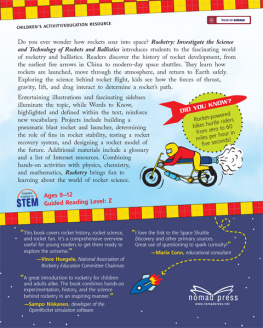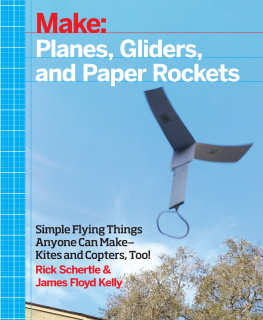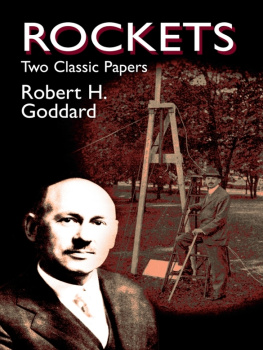Chapter 1
The Blue Streak Family
During the cold war years of the 1950s and 1960s there lived a family of large rockets named Blue Streak. The Blue Streaks were assembled in a factory near London, England. They were large rocketsthe largest outside of the USA and Soviet Russiaand they had with two very powerful engines.
At first the Blue Streaks were kept very secret because they were designed to carry nuclear bombs and thus had to be hidden from public eyes most of the time. Unless they worked in the manufacturing of the rocket, most people were prevented from seeing them or even knowing what they could do.
In the early days the Blue Streaks were destined to live in special holes in the ground, called silos which had a very strong lid on top. It was believed the Blue Streaks would be both hidden and protected in there until people decided they needed to be launched. Then they would only be launched in response to a nuclear attack. People called them defensive.
The Blue Streaks were not very happy about being enclosed in a deep silo because it would take a long time to supply them with 60 tons of super cold liquid oxygen and 27 tons of kerosene they needed to feed their two powerful RZ2 rocket engines.
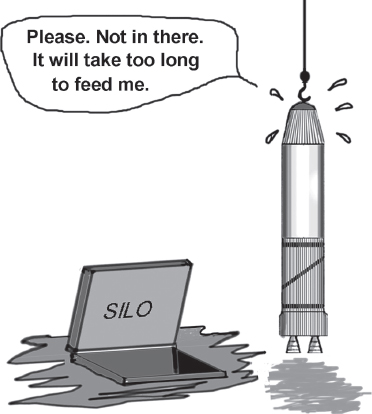
Blue Streaks had lots of energy and needed tons of fuel because they were designed to fly a great distance, deliver a nuclear warhead, and inflict a lot of damage on an enemy.
Important people in the British government were finally convinced the Blue Streaks would be useless as defensive weapons because it was taking too long to feed them. It would be better if the Blue Streaks could be kept above ground and then they would try to find some other use for them.
Now the Blue Streaks need not be kept so wrapped up in secrecy and people could finally marvel at the sleek lines of the awesome rocket. They were suitably impressed and could appreciate where their hard-earned tax money had been going.
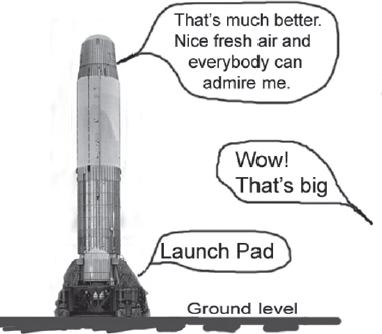
There were many Blue Streaks already assembled so they were stored away in warehouses and left there while people decided what to do. People had given each rocket an identification number, starting at #1, so they could keep track of them all.
Blue Streak #3 became a special favorite of ours so we like to call him Reggie the Rocket and we followed his exciting progress. The British Government had spent so much tax payer money that they needed to do something really worthwhile with the Blue Streaks or they would have to be scrapped. That would be such a shame. They held many meeting with the European countries and finally agreed to marry the Blue Streaks with other smaller rockets so they could all work together to place a two thousand pound satellite into low earth orbit
It would be a major achievement because, so far, the USA and USSR were the only countries with rockets powerful enough to launch satellites.
After a lot of discussions, the governments involved decided the Blue Streaks could be introduced to French made rockets named Coralie and German rockets called Astris. The Netherlands and Belgium joined in to provide some tracking equipment. Australiaso far awaywould provide facilities for launching the Blue Streaks. Australia had thousands of miles of unpopulated territory that was just perfect for a rocket range and they had already tested some less powerful rockets produced by British companies.

The countries called the collaborative program: European Launcher Development Organization (ELDO). Initially there were twelve Blue Streaks assigned to the satellite launch development program and they were re-identified as F1 to F12. Of course there were more than twelve rockets in storage so more would be available if needed. The Blue Streaks and the other smaller rocket stages would all have to be subjected to lots of complicated tests to prove they could get along together without any squabbles.
For some time the Blue Streaks lay around in warehouses with nothing to do except wonder what the future held for them. They were overjoyed when they were told about the satellite launching program. A nice peaceful project was much preferable to carrying a dangerous nuclear bomb.
With an eye to the future, the people involved started to call the Blue Streaks boosters since they would eventually boost the smaller Coralie and Astris up into space so that a satellite could be placed in an orbit around the earth. The satellite had to be going very fastabout 17,000 miles per hourto stay up there and circle the earth. The Blue Streaks, Coralie and Astris would all have to work very hard to achieve that very challenging objective.
Chapter 2
F1 the First in Line
Blue Streak F1 was the first to leave his factory home near London. He had been left sitting idle since his construction and was fed-up with being hidden in a miserable dark warehouse.
One day they brought him out, dusted him off and loaded him on a special transporter. His body had been held tight and straight in a special frame so the thin skin of his upper tank would not wrinkle, but now they also filled him with gas nitrogen to hold his body taut for a long road trip.
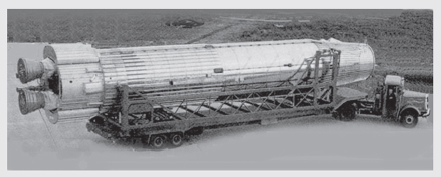
He was taken very slowly and carefully almost 300 miles through towns and country. It was strange because F1 knew he was designed to go very fast and, yet he was transported so slowly along the highways.
In some of the towns people lined the highways to get their first glimpse of a big rocket. Most were totally amazed because they had never seen anything quite like it before. F1 was glowing with pride and he put on a pretty good show with his shiny skin and sleek lines. His two rocket engine nozzles protruded menacingly out the back and gave him an appearance of awesome power. He wished he could show off even more by firing those engines and going much faster.
After two days of travel, the transporter arrived at a place called Spadeadam Rocket Establishment in the very north of England. It was the loneliest place F1 had ever seen because it was up on the high moors away from any villages or towns. However, some areas had been planted with row upon row of trees, so it was not all wild and heather clad moorland. Somewhere nearby was one of those silos but it had never been finished.. At Spadeadam, Blue Streak F1 found that he would be put through many static tests to see if he was fully prepared for the much greater challenge of flight that lay ahead. After all, he knew he was a rocket designed to fly. But, he also knew Britain had never before tried to fly a Blue Streak.
Rocket engines for the Blue Streaks were called RZ2. They all needed to be carefully assembled, tested and fine-tuned and, sometimes tested again, at Spadeadam Rocket Establishment before they could be ready to power a Blue Streak.
People in white coveralls came and carefully removed the RZ2 engines from F1 and took them away to the workshop. F1 suddenly felt so light because the two engines at his tail end weighed 1,500 pounds each and they made up a significant part of his overall weight.
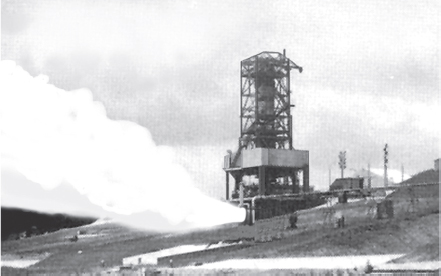
Next page

